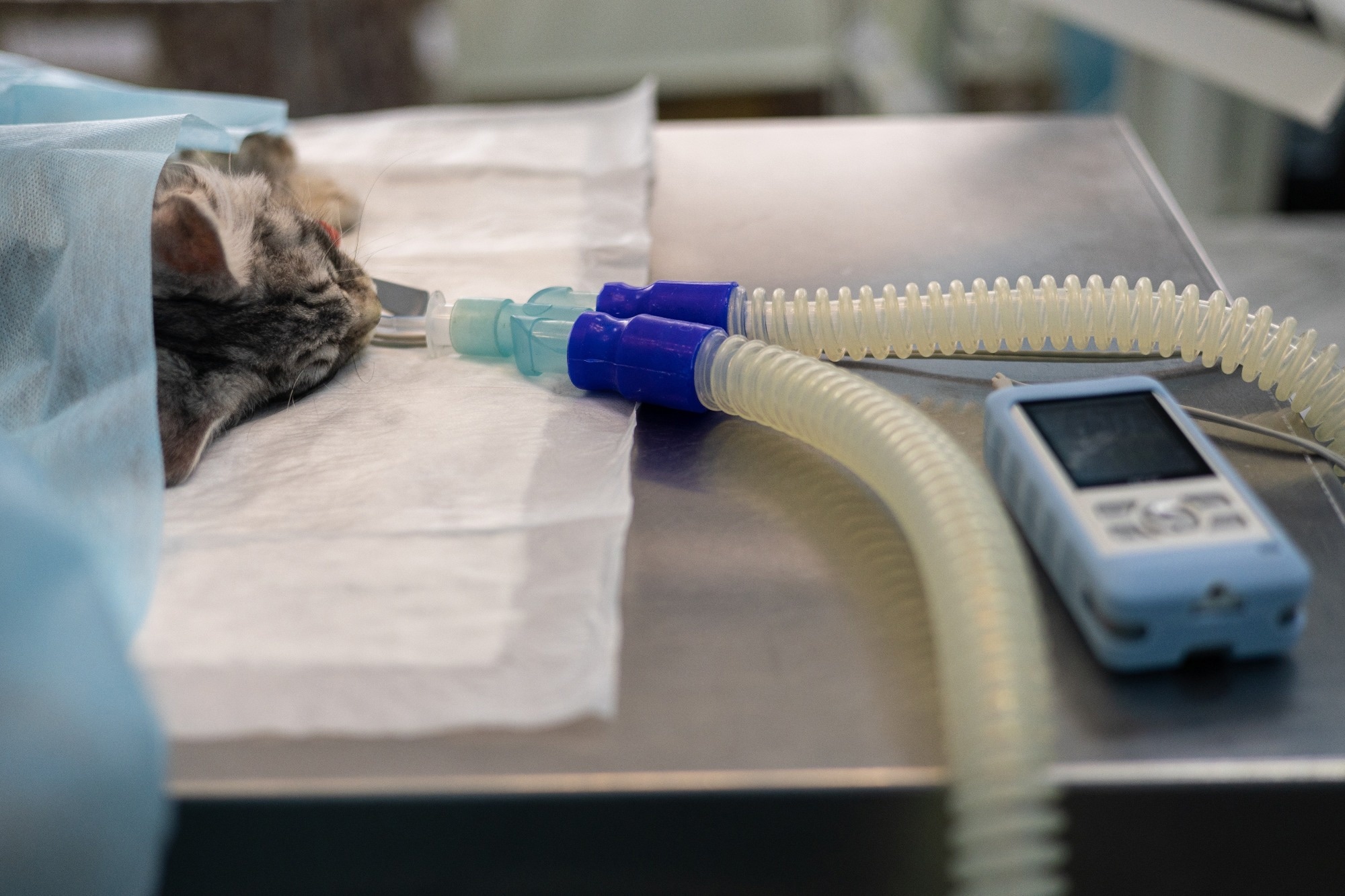 By Pooja Toshniwal PahariaReviewed by Lauren HardakerNov 27 2025
By Pooja Toshniwal PahariaReviewed by Lauren HardakerNov 27 2025Built from standard components but engineered for precision, the new $800 ventilator gives researchers customizable airflow patterns, fast setup, and performance that challenges commercial machines costing more than ten times as much.
 Image credit: Lebedko Inna/Shutterstock.com
Image credit: Lebedko Inna/Shutterstock.com
In a recent study published in Scientific Reports, researchers introduced a low-cost, multi-mode ventilator for small animal experiments, offering capabilities typically found in far more expensive systems.
Built from commercially available components for approximately $800, compared to devices costing between $4,000 and $38,000, the ventilator offers advanced and adjustable ventilation modes. Since ventilators are essential for maintaining stable physiology during drug testing and disease modeling, and high costs often limit access for smaller laboratories, this alternative could expand participation in advanced preclinical research.
High-End Respiratory Control Without High-End Costs
Efficient ventilation is essential in small animal research, yet many laboratories remain constrained by high-priced systems that offer limited programmability. Most commercially available ventilators comprise only a few fixed modes with minimal control over waveform shape, timing, or pressure profiles, making it tedious to support experiments that require precise or unconventional respiratory patterns. This lack of flexibility has created a persistent gap between research needs and the capabilities of accessible equipment.
The study introduces a low-cost ventilator that delivers advanced capabilities, volume-based control of flow, indirect pressure shaping, and carefully constrained timing, along with customizable ventilation patterns, at a fraction of the price of existing systems. Its performance evaluation shows how a programmable, open-architecture design can make sophisticated respiratory support more accessible for preclinical research.
Customizable Volume-Driven System Built From Standard Parts
In the present study, researchers developed and validated a multi-mode ventilator designed to address the limitations of expensive and functionally restricted commercial systems in preclinical testing. The ventilator supports standard modes, including Pressure Control Ventilation (PCV) and Volume Control Ventilation (VCV), with customizable parameters and inspiration–expiration profiles.
The system uses a two-cylinder configuration driven by a single stepper motor and lead screw. This arrangement provides precise volume displacement. Tidal volumes range between 1.0 and 15 mL, with respiratory rates up to 120 breaths/minute. Five solenoid valves control inspiration, expiration, and passive positive end-expiratory pressure (PEEP) pressure, while flow and pressure are continuously monitored via pneumotachographs and piezoelectric sensors to ensure accurate delivery. PEEP is set using a mechanically adjustable valve rather than an electronically regulated control system.
A high-performance 8-bit microcontroller regulates valve timing, motor movements, and ventilation settings through a graphical user interface (GUI). Users can select predefined or custom waveforms for inspiration and expiration, adjust tidal volume, respiratory rate, and the inspiratory–expiratory ratio. They can also execute recruitment maneuvers for alveolar opening. Safety features include motor speed limits, real-time parameter validation, and continuous monitoring of acceleration, deceleration, and piston position.
Validation included in vitro testing using a lung model and flexible test lungs, followed by in vivo experiments in 15 anesthetized Sprague Dawley rats under tracheotomy. Animals underwent sinusoidal and VCV breathing cycles in a crossover design under standardized settings (FiO₂ 0.30, 1:2 inspiratory–expiratory ratio, 4.0 cm H₂O PEEP, and 8.0 mL/kg tidal volume). The team adjusted the ventilation rates to maintain physiological arterial CO₂ levels at 35 to 45 mmHg. These tests confirmed accurate volume delivery, consistent waveform reproduction, stability of manually set PEEP, and reproducible ventilation patterns.
Ventilator Achieves Accurate Flow, Pressure, And PEEP Stability
The ventilator generated a wide range of ventilation profiles, including VCV and PCV. While VCV produced linear inspiratory and exponential expiratory flow, PCV, operating as a volume-targeted approximation, showed exponential flow throughout. The system supported flexible combinations of inspiratory and expiratory patterns, including sinusoidal and rectangular profiles, enabling tunable respiratory protocols.
Flow and pressure measurements closely matched set parameters across all modes. Cumulative volume curves were consistent across profiles and PEEP levels (2.0, 4.0, and 10 cm H₂O). Motor positions and velocities correlated with measured flow and pressure, confirming precise mechanical control. PEEP remained stable during volume withdrawal, though forceful expiratory patterns occasionally caused brief undershoots.
In vivo, both VCV and sinusoidal ventilation achieved target tidal volumes, PEEP, and arterial CO₂ with high accuracy, with maximum and driving pressures comparable across modes. The ventilator required a very short boot time, initiated ventilation immediately after motor homing, and resumed reliably after soft resets. It consistently delivered tidal volumes of 1.0–15 mL (reaching 35 mL at the highest setting) and accommodated breathing frequencies of 120 cycles per minute. Advanced features included regulated exhalation, lung expansion maneuvers, multiple modes, and flexible inspiratory–expiratory timing.
Taken together, in vitro and in vivo testing confirmed the ventilator’s precision, reliability, and versatility. Its use of standard, easily sourced components resulted in a cost-effective system ($800) that matched, and in some aspects exceeded, commercial devices. By lowering financial and technical barriers, this platform broadens access to high-quality experiments and supports more reproducible research, benefiting emerging workshops and resource-limited institutions.
Overall, the study findings demonstrate that a low-cost, multi-function ventilator for small animals can deliver precise, reliable, and flexible respiratory support with capabilities comparable to far more expensive systems. Modular components expand access to advanced ventilation strategies and enhance reproducibility. While refinements to valve performance and flow stabilization could improve accuracy, this work establishes a strong foundation for next-generation, affordable research ventilators.
Journal Reference
Dzierzawski, P., Flamm, B., Hegele, V. et al. Design and development of an affordable multi-mode small animal ventilator. Sci Rep, 15, 40337 (2025). DOI: 10.1038/s41598-025-28241-w. https://www.nature.com/articles/s41598-025-28241-w